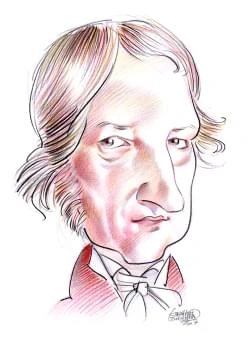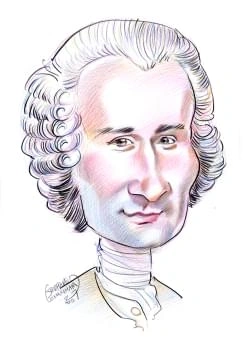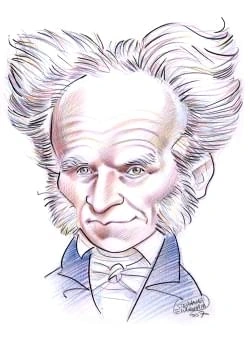16 résultats pour "dwarf"
- White Dwarf - astronomy.
-
Nova - astronomy.
When first discovered, the spectrum of a nova shows that the expanding layers of gas that cause the brightening have temperatures of 40,000° to 50,000° C (70,000°to 90,000° F)—about eight times as hot as the surface of the Sun. By the time a nova reaches maximum brightness, the temperature of the material has fallen to about10,000° C (about 20,000° F), or lower. Just after maximum brightness, the escaping cloud of gas cools and expands enough to become transparent. This transparency allows astro...
-
Solar System - astronomy.
dwarf planets according to the IAU because they have rounded shapes from their own gravity but have not cleared their neighborhoods in space of other objects—bothorbit through the Kuiper Belt, a region beyond Neptune containing thousands of small icy bodies. Pluto and Eris are composed of layers of ice around a rocky core.Ceres qualifies as a dwarf planet because it is spherical but is found in the asteroid belt, a zone between the orbits of Mars and Jupiter that contains thousands of smallrocky...
-
Supernova - astronomy.
The term hypernova has been proposed for an extremely massive core-collapse supernova—possibly more than 100 times the mass of the Sun. A hypernova is thought to form a black hole. Just before it explodes, a hypernova may release a huge burst of gamma rays in a jet from the rotating black hole at its center. These jets mayexplain the so-called long gamma-ray bursts detected by astronomers. According to some researchers, massive stars with over 40 solar masses may sometimescollapse directly int...
-
Extrasolar Planets - astronomy.
When a planet passes in a front of the star it orbits—an event called a transit—it causes a small dip in the brightness of the star. Measuring the slight change in thebrightness can be used not only to directly detect a planet, but to determine its size and orbit. However, the planet needs to orbit in a plane that lies in a telescope’sline of sight on the star. Despite long odds, Earth-based telescopes have detected and studied a few exoplanets using this method. The first space telescope design...
-
Excerpt from The Old Curiosity Shop - anthology.
'Well!' muttered Quilp, as he marked her earnest look. 'I believe you. Humph! Gone already? Gone in four-and-twenty hours I What the devil has he done with it,that's the mystery!' This reflection set him scratching his head and biting his nails once more. While he was thus employed his features gradually relaxed into what was with him acheerful smile, but which in any other man would have been a ghastly grin of pain, and when the child looked up again she found that he was regarding her with...
-
Asteroid - astronomy.
Asteroids of the S type, related to the stony iron meteorites, make up about 15 percent of the total population of asteroids that can be seen from Earth. Much rarer arethe M-type objects, corresponding in composition to the meteorites known as “irons.” These objects are made up of an iron-nickel alloy and may represent the cores ofbodies that were large enough to differentiate into layers and to melt deep inside. Their rocky outer layers may have been removed by impacts with other asteroids . A...
-
Star (astronomy) - astronomy.
absorbing the missing colors of light. For example, the set of dark lines made by hydrogen includes a dark red line, the set of dark lines made by sodium includes a pairof dark yellow lines, and the set of dark lines made by iron includes lines of nearly every color. Each element in the gaseous outer layer of a star produces its ownparticular pattern of dark spectrum lines, depending on the temperature and pressure of the gas. Astronomers have observed spectrum lines, or spectra, for hundredsof...
-
-
Planetary Science - astronomy.
III ORIGINS AND COMPOSITIONS OF PLANETS Astronomers believe that planetary systems are formed of elemental materials that were created in the interiors of giant stars. Some of this material comes from giantstars that shed material into space as they age. Most of the matter to form planets, however, comes from stars that explode as supernovas and spread debris enrichedwith the heavier chemical elements into space. According to the currently accepted views, the most likely first stage in the evo...
-
Pluto - astronomy.
depended on how Pluto was classified. The status of Pluto drew world attention in 2006 when the official body that governs the naming of astronomical objects, the International Astronomical Union (IAU),voted for an official definition of the term planet . According to the standards adopted, a “classical planet” must orbit the Sun, must have a rounded shape from effects of its own gravity, and must be the dominant object in its region of space, having cleared the neighborhood of its orbit of oth...
-
Neptune (planet) - astronomy.
The gaseous atmosphere of Neptune contains hydrogen, helium, and about 3 percent methane. It extends about 5,000 km (about 3,000 mi) above the planet’s ocean.Light reflected from Neptune’s deep atmosphere is blue, because the atmospheric methane absorbs red and orange light but scatters blue light. In 1998 astronomersalso identified molecules of methyl in Neptune’s atmosphere. Methyl molecules each contain one carbon atom and three hydrogen atoms. Methyl molecules are knownas hydrocarbon radical...
-
Neutron Star - astronomy.
about three times the full mass of the sun, the gravitational force will exceed the strength of the material, and the core will collapse until it disappears from the visibleuniverse altogether. This extreme state of gravitational collapse is known as a black hole. Astronomers speculate that neutron stars in interacting binary star systemscan become black holes by accumulating mass in the same way that white dwarf stars in interacting binary star systems become more massive. Contributed By:Dennis...
-
Sun - astronomy.
A The Sun’s Place in the Milky Way The Milky Way Galaxy contains about 400 billion stars. All of these stars, and the gas and dust between them, are rotating about a galactic center. Stars that arefarther away from the center move at slower speeds and take longer to go around it. The Sun is located in the outer part of the galaxy, at a distance of 2.6 × 10 17 km (1.6 × 10 17 mi) from the center. The Sun, which is moving around the center at a velocity of 220 km/s (140 mi/s), takes 250 million y...
-
Walt Disney
I
INTRODUCTION
Walt Disney
Walt Disney, an American cartoonist and film producer, started an entertainment empire with his creation of animated
movies and world-renowned amusement parks.
Donald DuckDonald Duck waves to visitors at Walt Disney World in Orlando, Florida. The Disney Studios created the excitable duck in1934.Kelly-Mooney Photography/Corbis In 1923 Disney moved to Hollywood, California. He, his brother Roy O. Disney, and Iwerks began producing short animated films. In 1927 Disney created the cartooncharacter Oswald the Rabbit. A year later he produced another character, a mouse called Mortimer, but shortly after changed the name to Mickey. In 1928 MickeyMouse starred...
-
Diego Velázquez (artist)
I
INTRODUCTION
Velázquez and Baroque Theatricality
Spanish painter Diego Velázquez presents two scenes in The Fable of Arachne (about 1656, Museo del Prado, Madrid,
Spain), also known as The Spinners.
search for a position as court painter. In 1623, however, he returned to the capital and, after executing a portrait (1623, Prado) of the king, was named official painterto Philip IV. The portrait was the first among many such sober, direct renditions of the king, the royal family, and members of the court. Indeed, throughout the later1620s, most of Velázquez's efforts were dedicated to portraiture. Mythological subjects would at times occupy his attention, as in Bacchus, also called The Drin...
-
Astronomy - astronomy.
Telescopes may use either lenses or mirrors to gather visible light, permitting direct observation or photographic recording of distant objects. Those that use lenses arecalled refracting telescopes, since they use the property of refraction, or bending, of light ( see Optics: Reflection and Refraction ). The largest refracting telescope is the 40-in (1-m) telescope at the Yerkes Observatory in Williams Bay, Wisconsin, founded in the late 19th century. Lenses bend different colors of light by d...
}})








